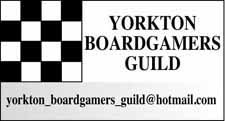This week I'm going to take the first look at a miniature war game called Dystopian Wars.
This is a game my local gaming enclave came across at a gaming convention in Brandon last June.
So what was it about the starter boxes that caught our attention, because admittedly before seeing the game at Brandon we collectively knew nothing of Dystopian Wars?
The answer is simple enough, the cool 'steampunk' miniatures.
So first I suppose a definition of steampunk is at hand.
Steampunk is a sub-genre of science fiction that typically features steam-powered machinery, especially in a setting inspired by industrialized Western civilization during the 19th century. Therefore, steampunk works are often set in an alternate history of the 19th century's British Victorian era or American "Wild West", in a post-apocalyptic future during which steam power has regained mainstream use, or in a fantasy world that similarly employs steam power. Steampunk perhaps most recognizably features anachronistic technologies or retro-futuristic inventions as people in the 19th century might have envisioned them, and is likewise rooted in the era's perspective on fashion, culture, architectural style, and art. Such technology may include fictional machines like those found in the works of H. G. Wells and Jules Verne, or the modern authors Philip Pullman, Scott Westerfeld, and China Miéville," details Wikipedia. While Wiki might not have everything right, this definition is a nice fit.
And Dystopia Wars fits right in too, with its dirigible airships, steam powered ocean fleets, and alternate history land tanks.
The introductory history in the Dystopian Wars explains the situation as it exists in the alternate history of game.
With the onset of the 19th Century, chemical and biological science underwent a similar revolution. Medicine made quantum leaps, with the adoption of effective hygiene, new treatments and mechanical prosthetics. New chemical compounds revolutionised the production of everything from fuels to foodstuffs.
After the discovery of the Vault and the revelation of its secrets by the Covenant of Antarctica, advancers were made with even greater speed. Iron Men labour alongside living workers, while bizarre devices, capable of defying the physical laws, have made possible vast flying engines. It is even rumoured that amazing new power sources may allow instantaneous translocation, although many still think the very notion of teleportation fanciful.
Key to so much of this was the discovery of the amazing Element 270, seemingly the Philosopher's Stone of legend. The blue-green crystalline substance has been discovered in increasing quantities around the world. It has made possible incredible metal alloys, fuels and propellants of enormous efficiency.
The alternate take on history really opens a game to a range of possibilities which allow freedom and freshness.
That the technology still harkens back to a simpler time, that when steam was king, adds a level of romanticism to Dystopian Wars which attracts many gamers like bees to sugar.
In terms of factions to play, Dystopian Wars has a wide range, including the obvious powers of the 'real' era, France, Britain, Prussia, but also including the Covenant of Antarctica, Japan, and the Federated States of America (remember it is an alternate history).
Canada has its own forces even, although they are not a major power.
The diversity of factions really allows a group of gamers to get into the game and not be facing off against a similar force very often.
The miniatures for each faction are rendered in 1/1200th scale. At one time small scale miniatures were pretty bland, but technology has changed and today they can be highly detailed, as witnessed by Dystopian Wars. The smallest tanks are indeed tiny, but after that the larger ones are detailed and gorgeous.
The game really allows three distinct phases of war, with naval, air and land units.
They can of course be part of a single battle if land forces are close to shore, although we haven't bothered with the naval aspect.
The dirigibles though work well in concert with land forces.
The one thing to note, given the small scale, there are no support troops here, at least in miniature form. They would simply be too small. I have noted on the game's website an effort to use dice to represent some limited ground troops.
The great alternate history line, which allows for amazing mechanical miniatures, with tons of detail in an affordable scale make Dystopian Wars hard not to gravitate too aesthetically.
Next week I'll discuss more about game play.
Check it out at www.spartangames.co.uk/games/dystopian-wars
If anyone is interested in this game, or other board games contact [email protected]




